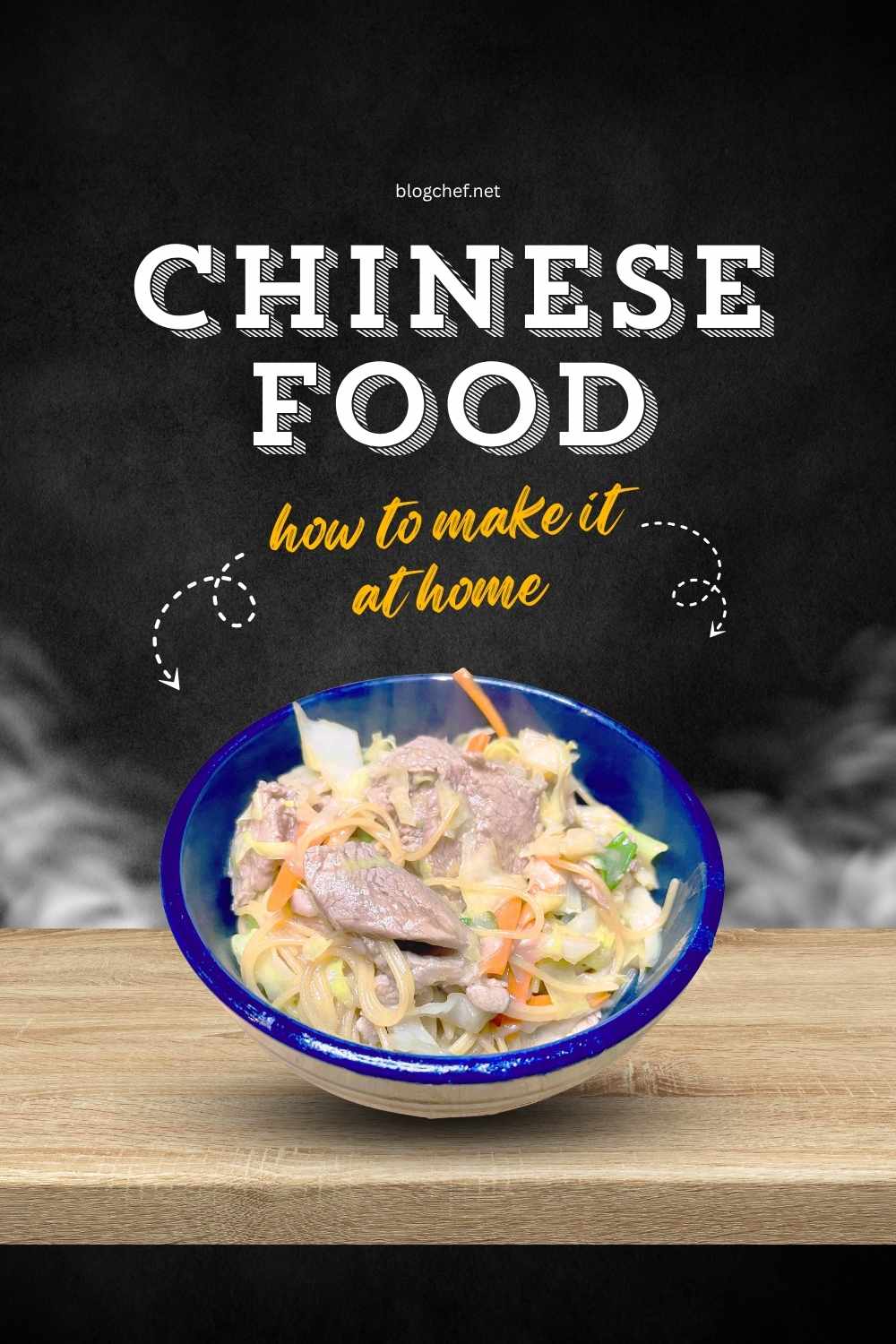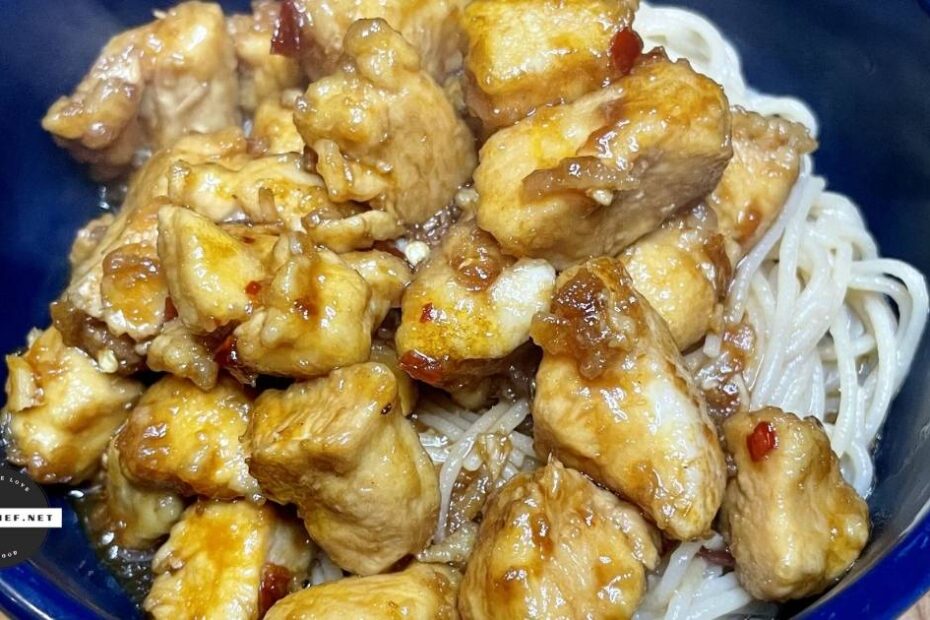There are cravings and then there are Chinese food cravings. That urge to dive into a crispy, sweet orange chicken or a savory and aromatic noodle bite…it can be intense. And while you may have various Chinese takeout options nearby, those classic dishes are healthier and cheaper when you learn to make them at home.
Consider this your guide to making easy Chinese food at home. We’ll cover essential ingredients, equipment, cooking techniques, and simple, satisfying recipes to get you started on your Chinese cooking journey.

Fundamental Chinese food ingredients
These ingredients are the “flavor kit” that gives everything a real Chinese taste, even when you’re cooking in a regular kitchen.
Condiments and sauces
- Light soy sauce is a common salty seasoning that works well on vegetables, in marinades, and in stir-fries.
- Dark soy sauce is thicker, richer, and gives food more color and flavor. A little bit goes a long way.
- Oyster sauce delivers a savory, slightly sweet umami flavor that you expect in your favorite Chinese dishes.
- Hoisin sauce is a sweet and savory glaze that goes well with noodles, BBQ pork, and dipping sauces.
- Rice vinegar adds a clean, bright flavor without being too strong.
- Sesame oil is a finishing oil — meaning you add it after cooking. It adds richness and a warm, nutty smell.
Spices and dry goods
- Cornstarch thickens sauces and makes coatings crispy.
- Chinese five-spice powder is an intense spice with a great smell.
- Dried chilies and Sichuan peppercorns optionally bring some heat.
- Jasmine or medium-grain rice is the classic side dish for many Chinese entrees.
Aromatics and produce
- Garlic. Only fresh garlic will do. For convenience, you can buy peeled, jarred garlic to keep in the fridge. You may need to use more because it tends to have less flavor than freshly peeled garlic.
- Fresh ginger. You can store ginger in the freezer. Thaw it for a few minutes to peel and grate before cooking.
- Green onion
- Your favorite quick-cooking veggies. I like snap peas, green beans, bell peppers, bok choy, and carrots. Broccoli is another popular choice.
Kitchen tools for homemade Chinese
You don’t need a commercial setup, but there are a few pieces of equipment that’ll make your life easier.
1. Wok
A carbon steel wok is worth its weight in gold carbon steel. It heats up quickly, cooks evenly, and can stir-fry or deep-fry as needed. To use a wok, preheat it until it starts to smoke a little, then add oil and you’re ready to go.
If you don’t have a wok, you can use a big, heavy skillet. Cast iron or stainless steel pans are good choices for beginners.
2. Heavy pot or deep fryer
Deep-frying is more common in Chinese than you may know. Sweet-and-sour chicken, crispy beef, and other fav dishes have a deep-fry step to get that crispy edge on the meat.
You can use a wok for deep-frying, but there are situations when you might want to stir-fry and deep-fry for a single recipe. A dedicated deep fryer is a great option, but you don’t have to invest in that unless you really want to. I use a deep, heavy pot for deep-frying.
3. Splatter screen
A splatter screen is a mesh ‘lid’ of sorts that covers your deep-frying pot to minimize oil spray. I have different sizes, and I use them a lot. They’re not perfect and they are hard to clean, but they do keep your stovetop a little cleaner.
4. Rice cooker or Instant Pot
You need to make rice and you may prefer a hands-free method if you’re also deep-frying and stir-frying. A rice cooker or Instant Pot can handle the job.
5. Slotted spoons
A heavy-duty slotted spoon with a long handle makes deep-frying safer and easier.
6. Mixing bowls
A few mixing bowls in different sizes helps you stay organized with your ingredients, sauces, and marinades.
Common Chinese cooking techniques
How to stir-fry
The main idea behind stir-frying is to cook food quickly over high heat. You get the best results by prepping everything ahead of time. That means cutting your ingredients into bite-sized pieces and making the sauce.
Once the ingredients are ready, heat your wok or big skillet until it starts to smoke. Add some oil, say 1 or 2 tablespoons.
Next, add your protein. Shrimp, tofu, and meat are the common choices. Cook to sear the outside edges. It should be nearly, but not quite, done. Remove the protein from the wok and add garlic, ginger, or scallions. Toss them around for a few seconds before adding veggies. Stir and cook the vegetables until they are crisp-tender.
Put the protein back in the pan, add your sauce, and stir everything together for another minute or two, or until everything is shiny and cooked through.
Read next: How to stir-fry: Ingredients and recipes for fast, fresh, healthy meals
How to deep-fry
Deep-frying involves submerging food in hot oil until it’s crispy and golden. The keys to success are getting the right oil temperature and working in batches so the oil doesn’t get too crowded.
Before you start, pat your ingredients dry. Optionally, coat them with batter, flour, or cornstarch.
Next, heat enough oil in a deep pot or fryer to cover your food. This is usually about 2 to 3 inches deep. Use a thermometer to find the right temperature to ensure the oil is 350°F to 375°F (177°C to 190°C).
Using tongs or a slotted spoon, slowly lower ingredients into the oil. Fry in batches so the oil temperature doesn’t cool down too much. Take the food out when it turns golden and floats to the top. Drain on a wire rack or paper towels.
How to make rice
You can make rice in a saucepan once you know the basic ratio: 1 cup of rice with 1 ½ to 2 cups of water or broth.
Start by rinsing the rice in cold water. This step removes extra starch and keeps your rice fluffy.
Put the rice, water, and some salt in a saucepan. Over medium heat, bring it to a gentle boil. Turn the heat down to low, cover the pan tightly, and let it simmer for 15 to 20 minutes for white rice or 35 to 45 minutes for brown rice. Do not open the lid.
When the water is gone, use a fork to scoop a few grains gently from the top. If they’re soft, turn off the heat and recover the pan. Let your rice sit for 5 or 10 minutes. Then use a fork to fluff the grains.
If you have a rice cooker, it’s even easier. Rinse the rice, add water to the machine to the fill line, press start, and let it do the work. You’ll get perfect rice every time.
How to slice veggies
A successful stir-fry requires even, bite-sized pieces that cook quickly. Here’s what to do.
Wash and dry your vegetables well. If they are wet, they will splatter in hot oil.
- Thinly slice hard veggies like bell peppers, broccoli stems, and carrots.
- Cut softer veggies into half-moons. This applies to zucchini and mushrooms.
- Rough-chop leafy greens like Bok choy or spinach.
5 Chinese dishes to try
Here are the most popular Chinese recipes on BlogChef.
1. Chinese chicken with snow peas
This is one of those recipes that’s hard to mess up if you have everything ready before you start. The sauce is savory with a little sweetness, and it pairs nicely with the fresh snow peas and chicken.
Chinese chicken with snow peas recipe
2. Kung Pao chicken
Bobby’s original Kung Pau chicken recipe is easy, quick, and tasty. It has minimal ingredients and does not require deep-frying or marinating the chicken. The recipe works best if you have a wok, but you can alternatively fry your chicken in a large, deep sauté pan.
3. Chinese honey chicken
This is a satisfying dish made of battered and deep-fried chicken pieces, coated in a sticky, sweet sauce flavored with ginger and garlic.
chinese-honey-chicken-recipe
4. Chinese lemon chicken
This Chinese Lemon Chicken recipe is a bright twist on classic takeout. Fried boneless chicken pieces are coated in a glossy, lemony sauce for a nice balance of sweet and sour.
5. Mongolian beef
Mongolian beef consists of sliced fried strips of steak coated with a sweet and spicy sauce. It’s a super popular takeout choice. When you make it at home, you can fry the beef strips in your wok or deep fry them for a crispier, richer bite.
Easy Chinese at home
You can make your favorite Chinese dishes at home quickly and with a lot of flavor if you have a well-stocked pantry and a good wok or skillet. Start with a few simple things, get used to the heat, and soon you’ll be stir-frying like a pro.
